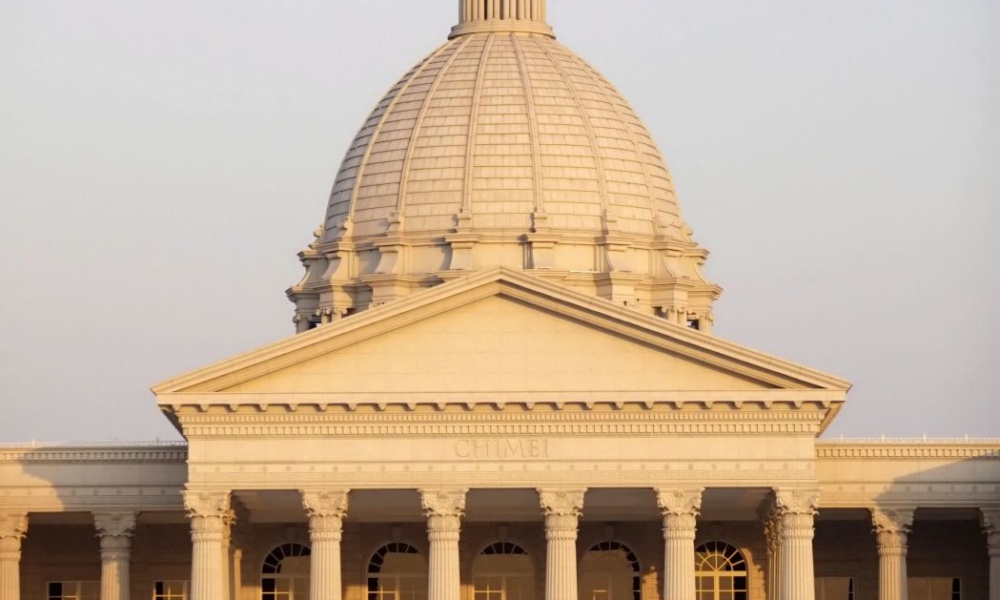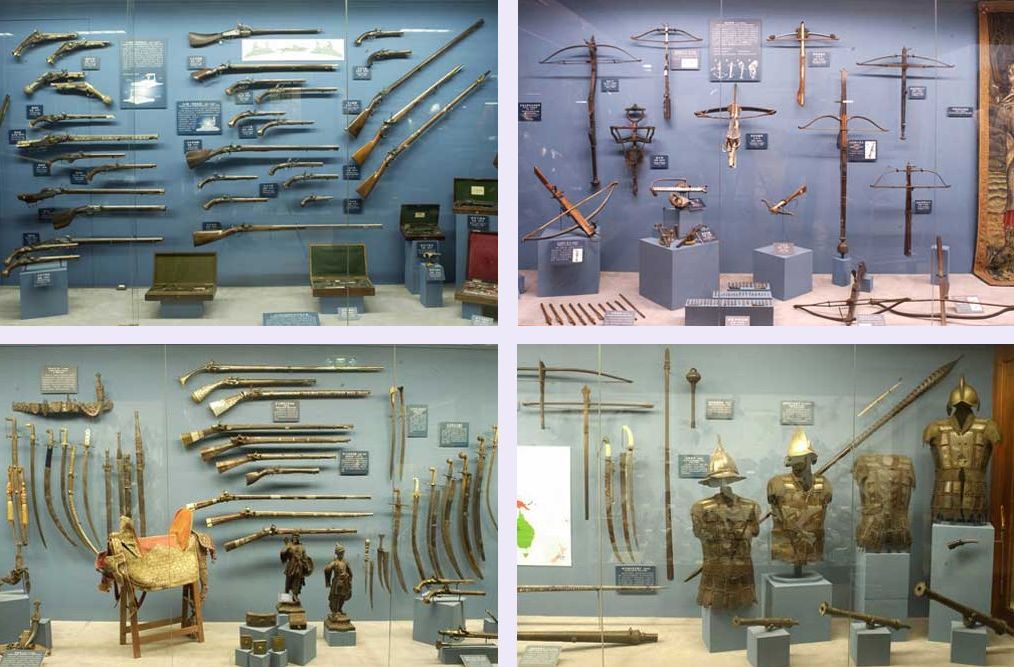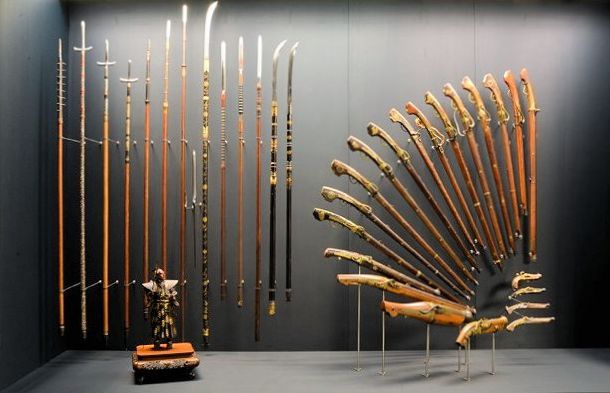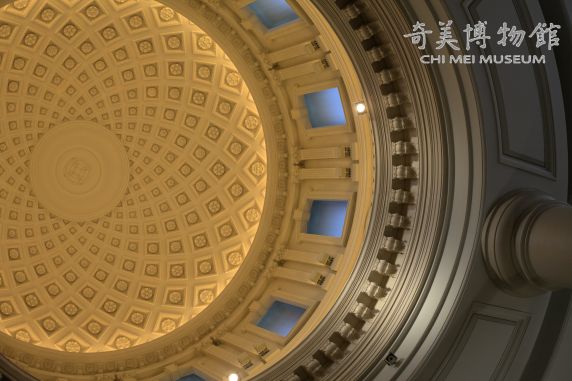
The largest museum in Asia dedicated to western art is being built in Tainan (in the southern part of the island of Taiwan, the Republic of China). It is to be inaugurated in February 2015 following a colossal, five-year, construction process.
Having participated in its creation, not only as a restorer but also as consultant for the painting and sculpture collections, I consider this museum to be well worth a visit. Twenty years of collaboration provides me with an opportunity to go back over the history of the creation of this remarkable private museum that contains, among other things, the most important private collection of musical string instruments in the world.
Everything commenced in 1977 when Mr Wen-Long Shi (he is now chairman of Chi Mei Industrial Corporation) decided to promote what he called “appreciable music and art” and created the Chi Mei Culture Foundation.
Founder Shi was born and raised in Taiwan, he was born during the japanese colonial empire in Taiwan in 1928. He was inspired by a local Tainan Educational Museum established by the japanese thas was opened free to the public, therefore he made a wish to build a museum for the public.
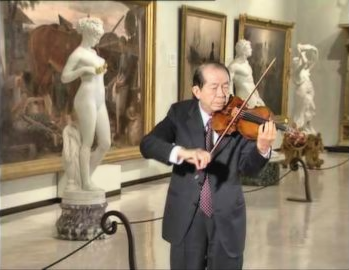
The foundation has two separate branches. One acquires musical instruments, trains musicians and, among other things, organises concerts all over the world. The other creates collections of weapons and works of art from antiquity to the beginning of the 20th century, with a predilection for European art from the Middles Ages.
Fifteen years later, in the beginning of the 1990s, the first Chi Mei Museum was built in Tainan. Installed at the head office of Chi Mei, at the entrance to the industrial site, it opened its doors to the public for free. The eclecticism of its collections offered visitors a historical and cultural voyage through the various western eras.
The 6,600 m² used for exhibitions and storage rapidly became insufficient. The collections, the acquisitions for each of which requiring approval from the founder, continued to grow year after year.
Thirty years after its creation, the Chi Mei Culture Foundation launched a pharaonic project: the construction in a park of a museum with 12,000 m² of exhibition rooms.
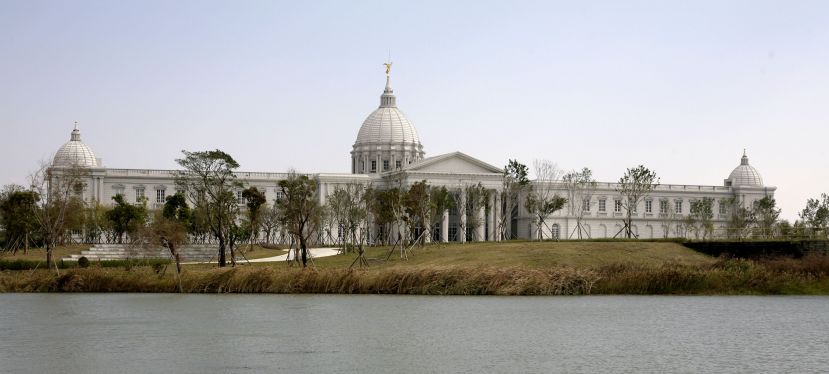
The earthquake-resistant building, covered in marble, also has a concert hall, a restoration workshop, a boutique and restaurants.
It will be open for free to five thousand visitors per day. To discover the museum, they will traverse gardens containing a variety of essences, walk around a pond containing an Apollo fountain (a reproduction in Carrare marble produced by my workshops and Franco Cervietti of that created in lead by J.-B. Tuby for King Louis XIV), cross a bridge inspired by the Pont Sant’Angelo in Rome and be welcomed by a guard of honour of Greek gods from the Pantheon in Carrare marble.
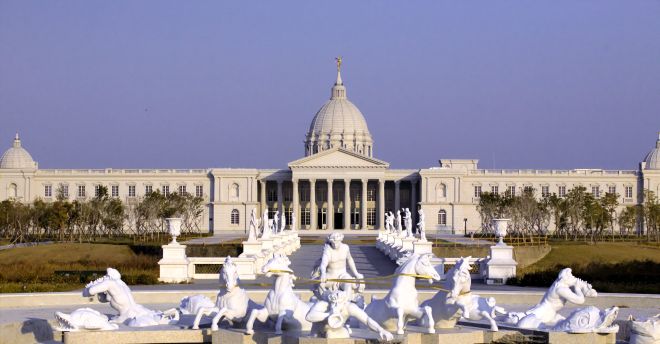

The collections are divided into 5 main departments
Ancient and modern musical instruments,
including the largest concentration of violins, altos and cellos in the world, containing approximately 1750 items including several Stradivaris, Guarneris and others from well-known stringed-instrument makers – unsurprisingly, as it is with a violin collection that the Chi Mei Culture Foundation initially began.

The strongroom for the Chi Mei Foundation stringed instruments.
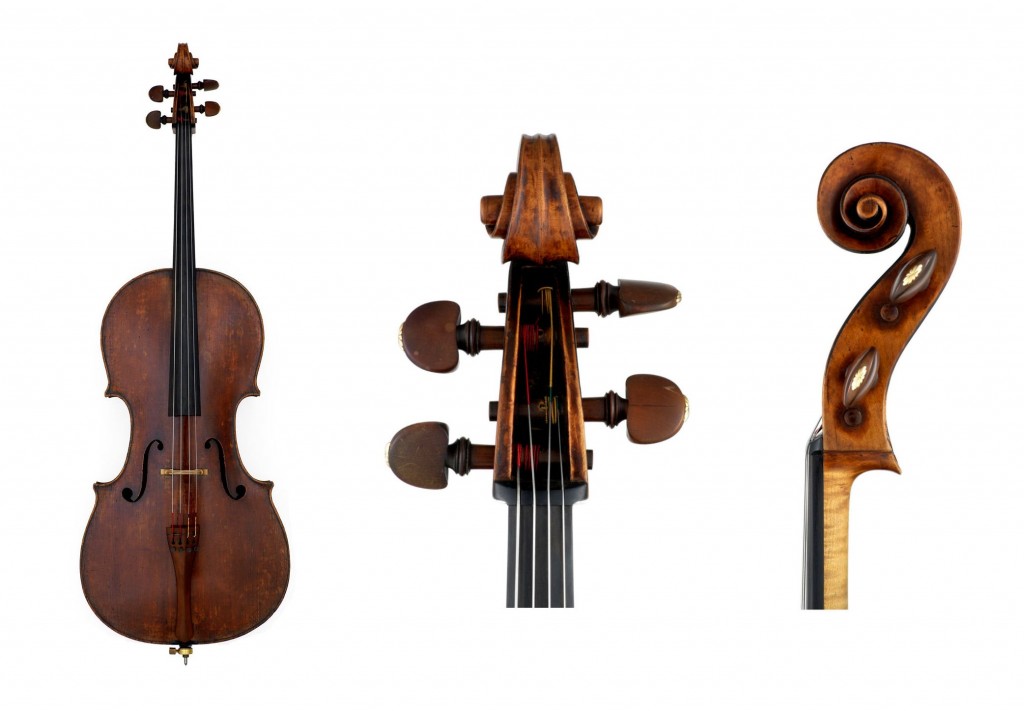 Cello by Antonio Stradivari, circa 1730.
Cello by Antonio Stradivari, circa 1730.
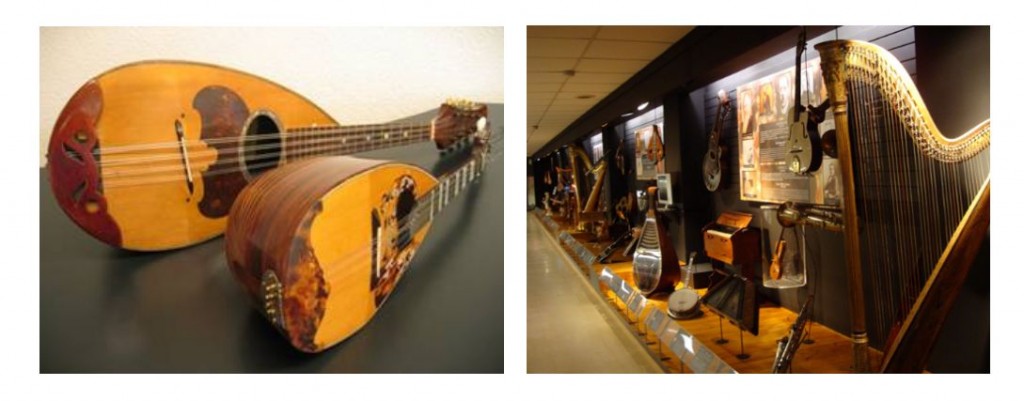
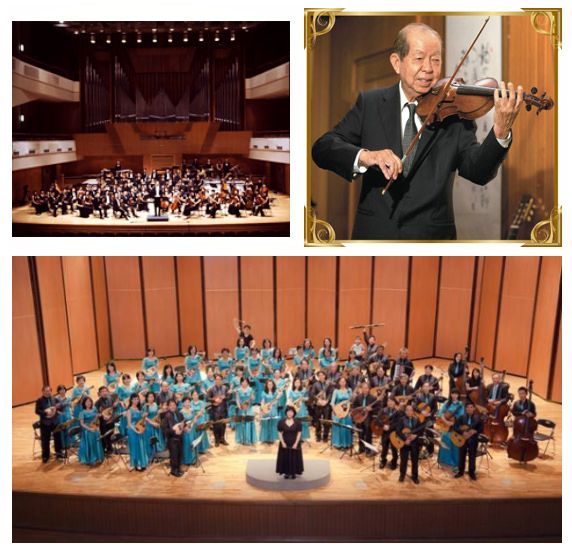 A concert hall in the new museum with exceptional acoustics will regularly hold lyrical and philarmonic concerts for 700 spectators.
A concert hall in the new museum with exceptional acoustics will regularly hold lyrical and philarmonic concerts for 700 spectators.
Historical artefacts,
from major civilisations of the past, from prehistoric sculptured stones to Roman mosaics, this department offering us an overview of the evolution of humanity, with artefacts from Egypt, Greece, Ancient Rome, China and Sri Lanka in particular.
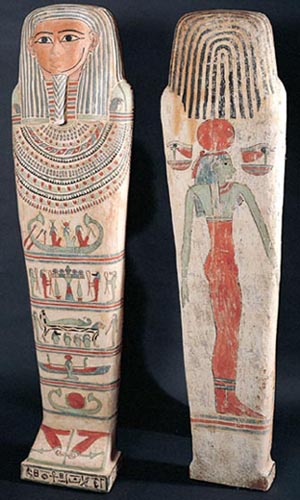
Egyptian coffin 800 years B.C. (restoration by Ateliers Gilles Perrault)
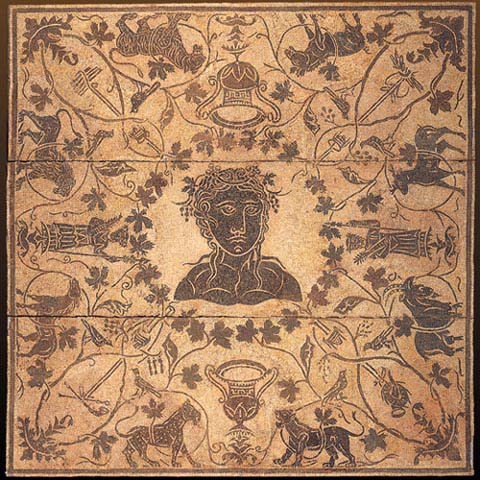
Floor mosaic from the 3rd century Roman Empire
Natural history,
in which visitors discover taxidermied animals from all over the world. The specimens are presented in decors that represent their natural environments and come from Africa, America, Eurasia, Australia, India, the Arctic and Antarctic. One area is specifically dedicated to birds from all over the world, and a range of butterflies, meteorite fragments and fossils complete this impressive catalogue. It should be noted that these samples have significant value as scientific education for schoolchildren, but can also be a source of self-instruction for the wider public.
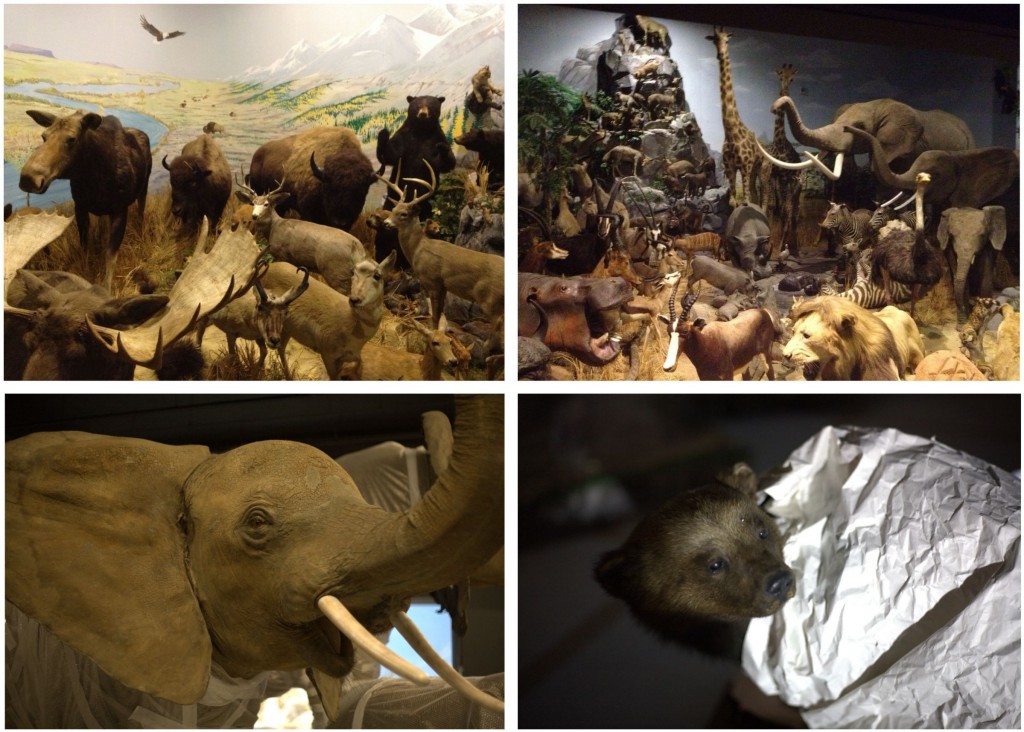
Ancient weapons and armor,
up to the 19th century from Europe, India, Persia, Africa, Asia and Japan. They reflect the evolution of the human civilisation and the cultural distinctions between various regions in the world. The collections of European firearms and the swords and armour of Japanese samurai are particularly impressive for both their quality and their quantity.
Creation and design of layouts and window displays by Ian Ashdown, a leading specialist in the restoration of weapons and armour.
Western paintings and sculptures,
are the focus of the largest private collection in Asia. It covers works from all periods and the major schools of Western art from the Renaissance to baroque, rococo to romanticism, a veritable treasure on display, with a special mention for French paintings and sculptures from the end of the 19th century, the most remarkable period of French influence, with major works by Rodin, Claudel, Barye, Bourdelle, Degas, Dalou and many others… (1)
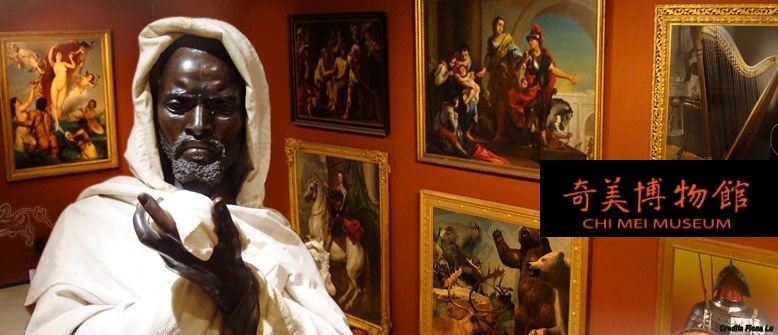 Othello
Othello
Bronze and marble
Pietro Calvi (1817-1855)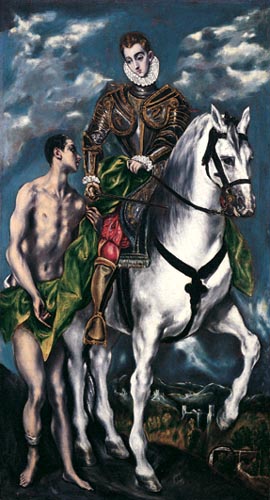 Saint Martin and the Beggar
Saint Martin and the Beggar
Oil on canvas
El Greco (1540~1550-1614)
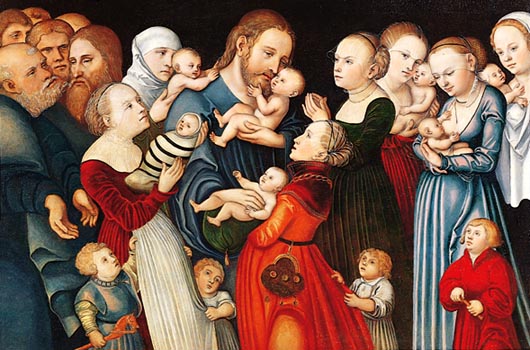 Christ blessing the children
Christ blessing the children
Lucas Cranach the Younger (1515-1586)
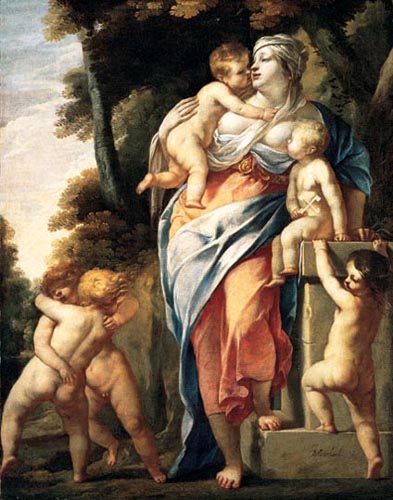 Charity
Charity
Oil on canvas
Jacques Blanchard (1600-1638)
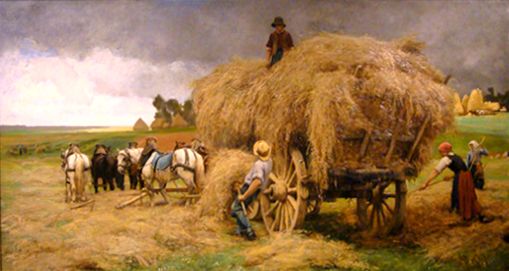 The Harvesting of the Hay
The Harvesting of the Hay
Oil on canvas
Julien Dupré (1851-1910)
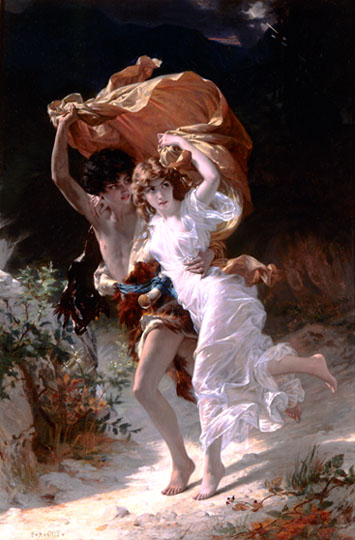 The Storm
The Storm
Oil on canvas
Pierre-Auguste Cot (1837-1883)
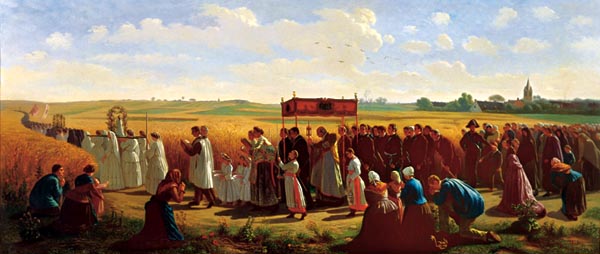 Blessing of the wheat
Blessing of the wheat
Oil on canvas
Jules Breton (1827-1906)
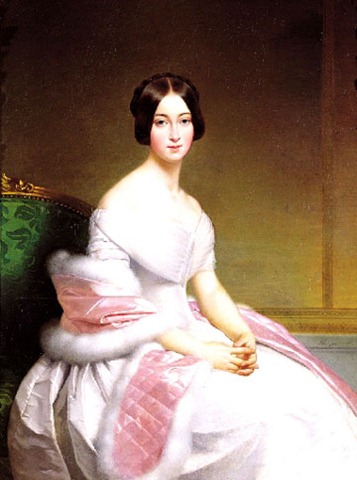 Portrait of Madame De Blanzay
Portrait of Madame De Blanzay
Oil on canvas
Alexis-Joseph Perignon (1806-1882)
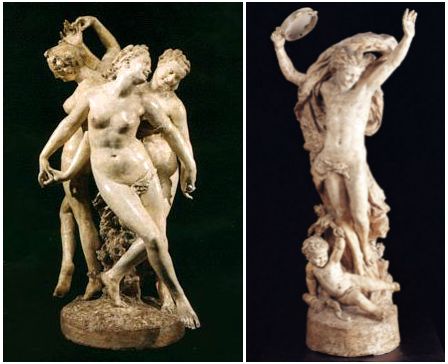 The Three Graces and The Danse
The Three Graces and The Danse
Plaster models
Jean-Baptiste Carpeaux (1827-1875)
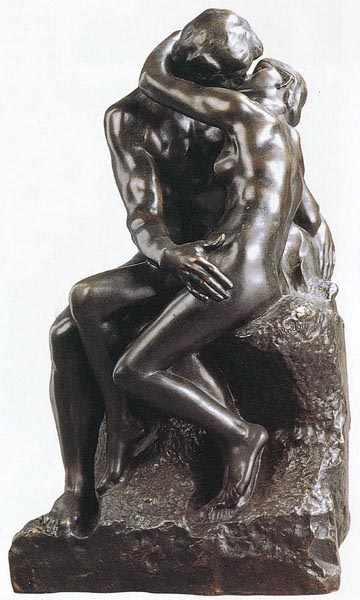 The Kiss
The Kiss
Original size – cast by F.Barbedienne
Auguste Rodin (1840-1917)
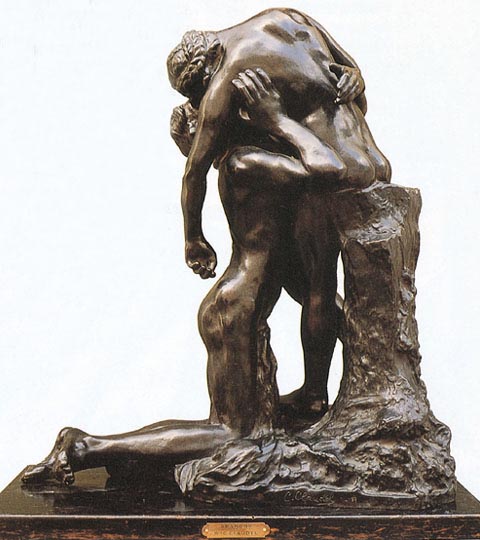 L’abandon
L’abandon
Large size model – cast by Eugène Blot
Camille Claudel (1861-1943)

Since 2010, a new setting is, therefore, under construction for the collections and its inauguration is expected in February 2015. The neoclassical-style building will, like the previous museum, be open to the public for free. Mr Wen-Long Shi has had it built for the Taiwanese people and with the idea of providing an artistic education for his co-citizens. He knows that the contemplation of fine works and objects is a fundamental step towards the expression of one’s own creativity, a necessary basis for the self-fulfilment of each and everyone.
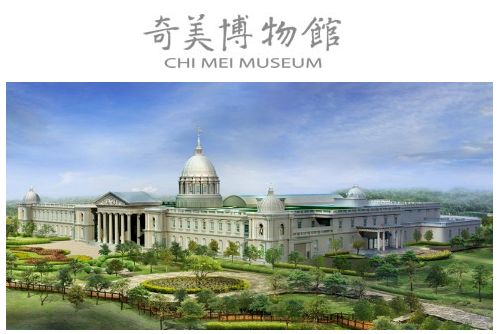
This desire is clearly noticeable on entry into the park, as the visitors will be welcomed by two bronze reproductions of major monumental works by A. L. Barye, Theseus fighting the Centaure Bienor and Lion and Serpent (2), then, 200 metres away, by the reproduction in Carrare marble of the most famous sculpture in the Palace of Versailles park, Apollo driving the sun chariot, originally created by J. B. Tuby in gilded lead (noting that, in that era, the choice of material was due to the obligation to save the royal purse money).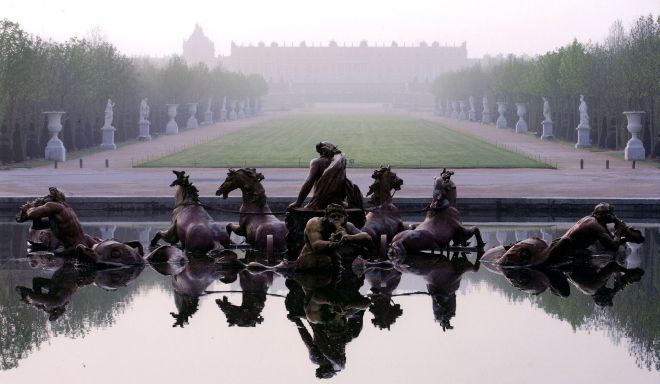
As former restorer at the Palace of Versailles and sculptor, I was entrusted with producing the copy of this combined sculpture, which has a diameter of 13 m and height of 3 m (3).
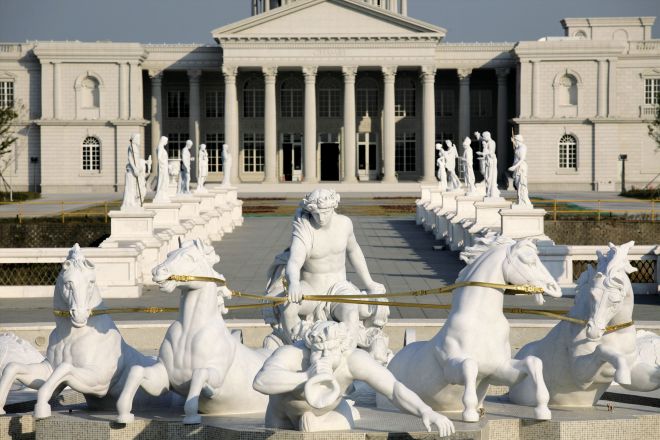
Plaster models were produced by my workshops at two-thirds the size of the originals, worthy of the Grand Siècle, which enabled artists from the Franco Cervietti workshop in Pietrasanta (4) in the Carrare region to produce the full-size marble sculptures.
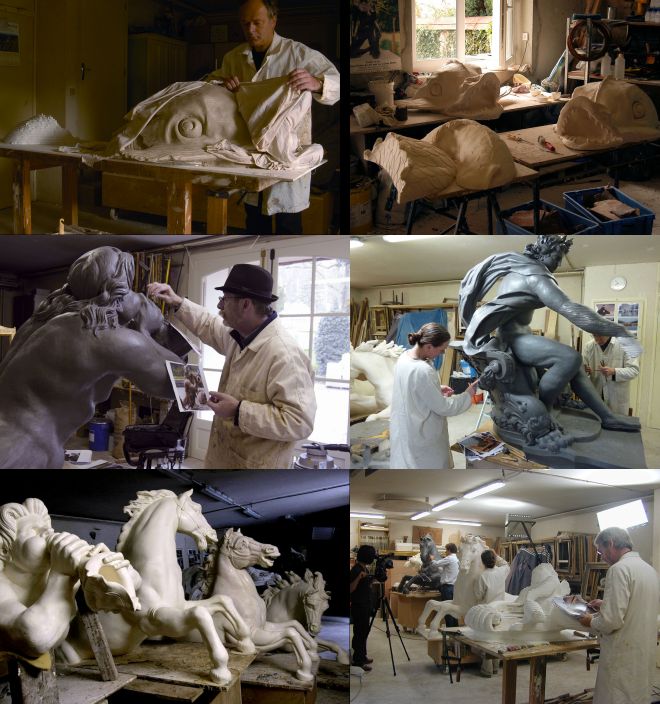
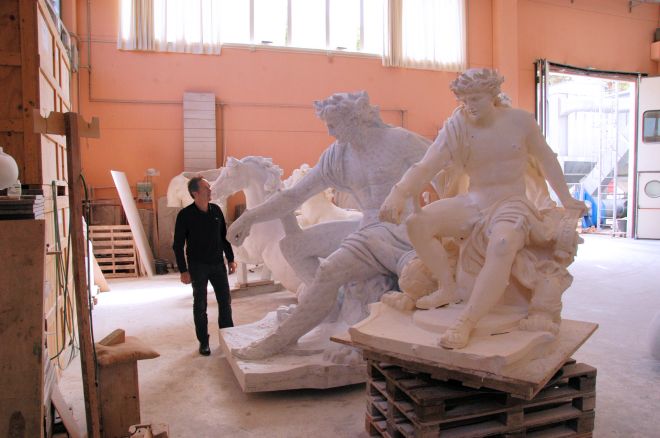
We installed the combined marble sculpture in its pond in January 2014: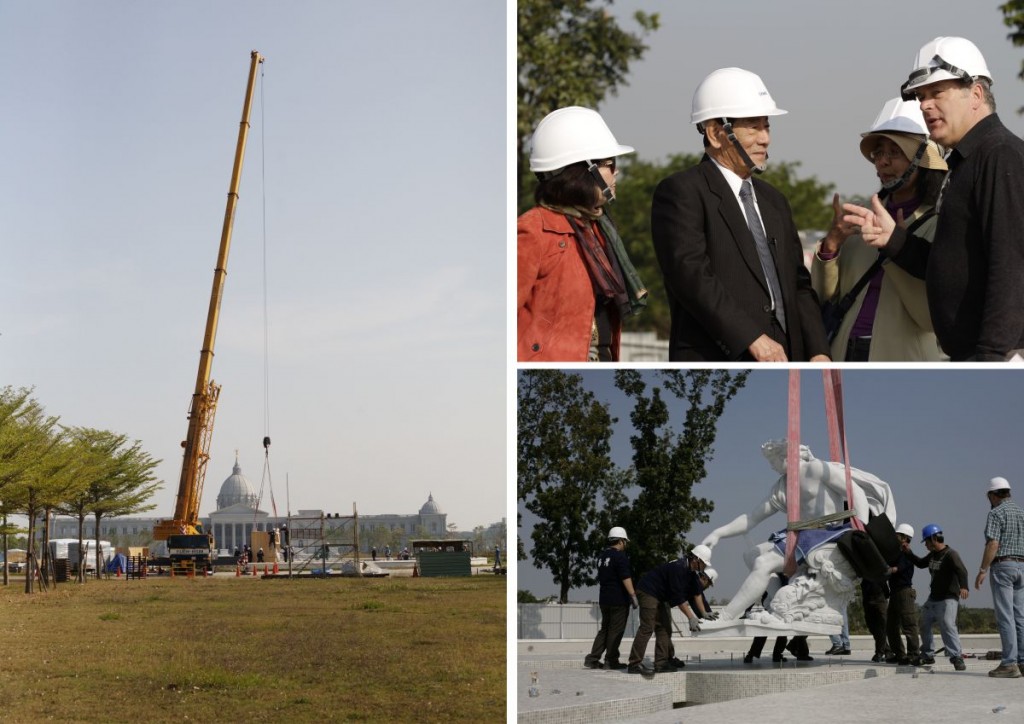
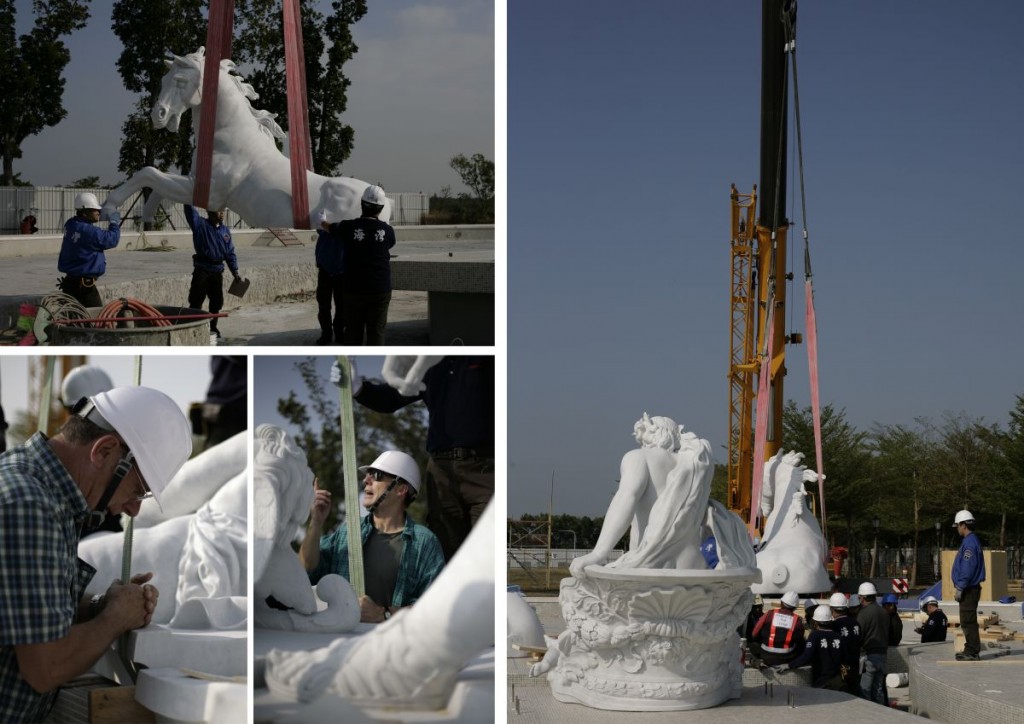
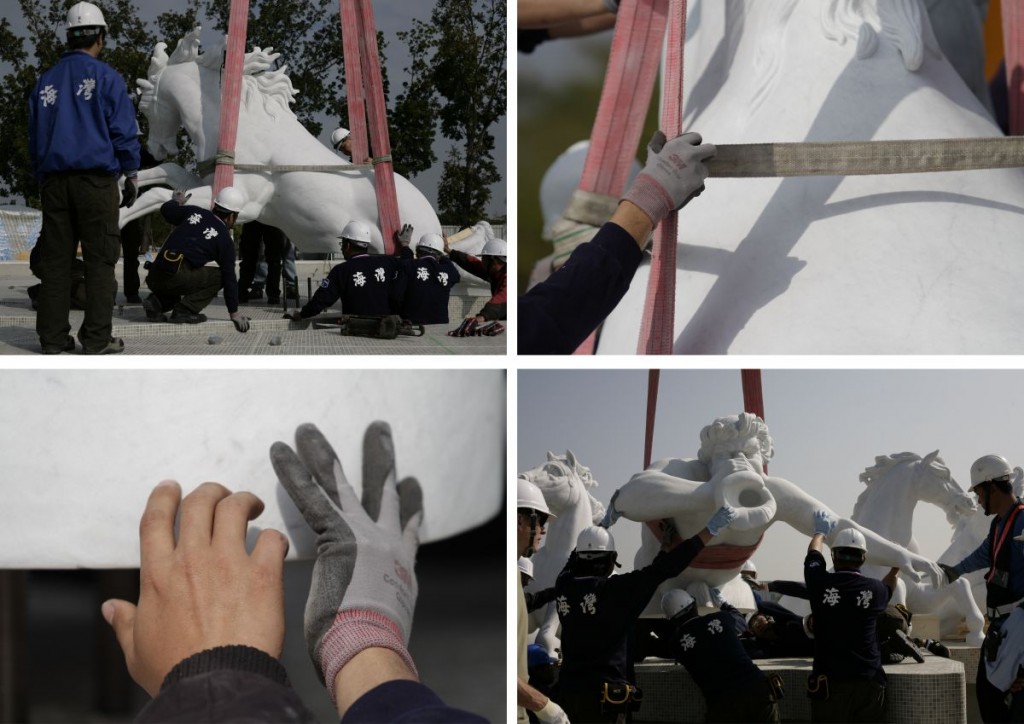
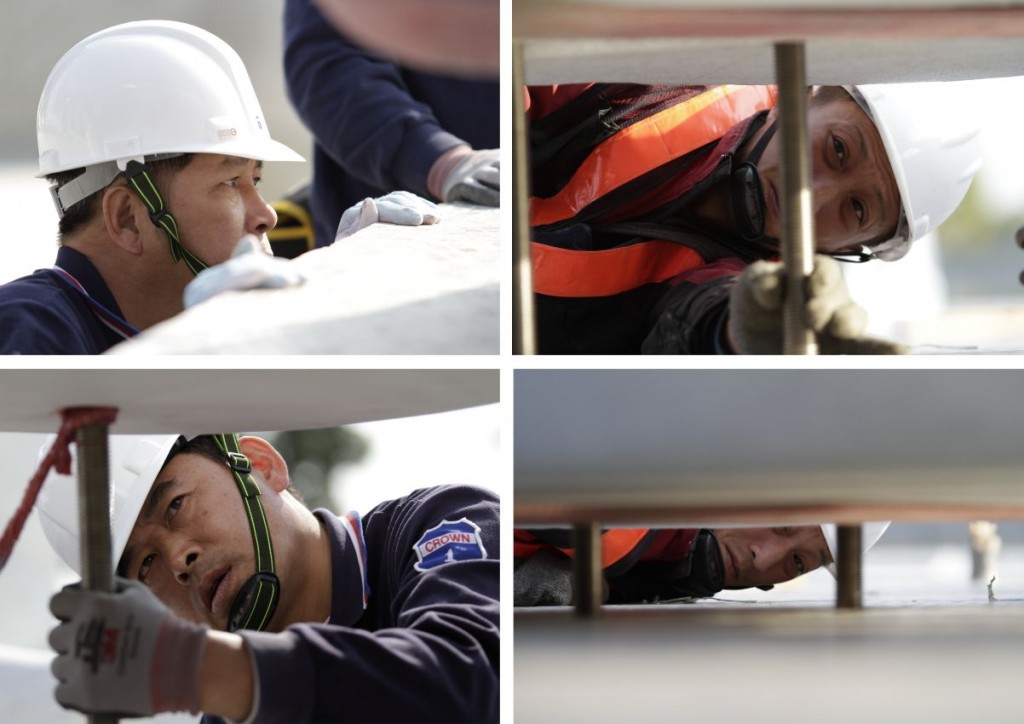
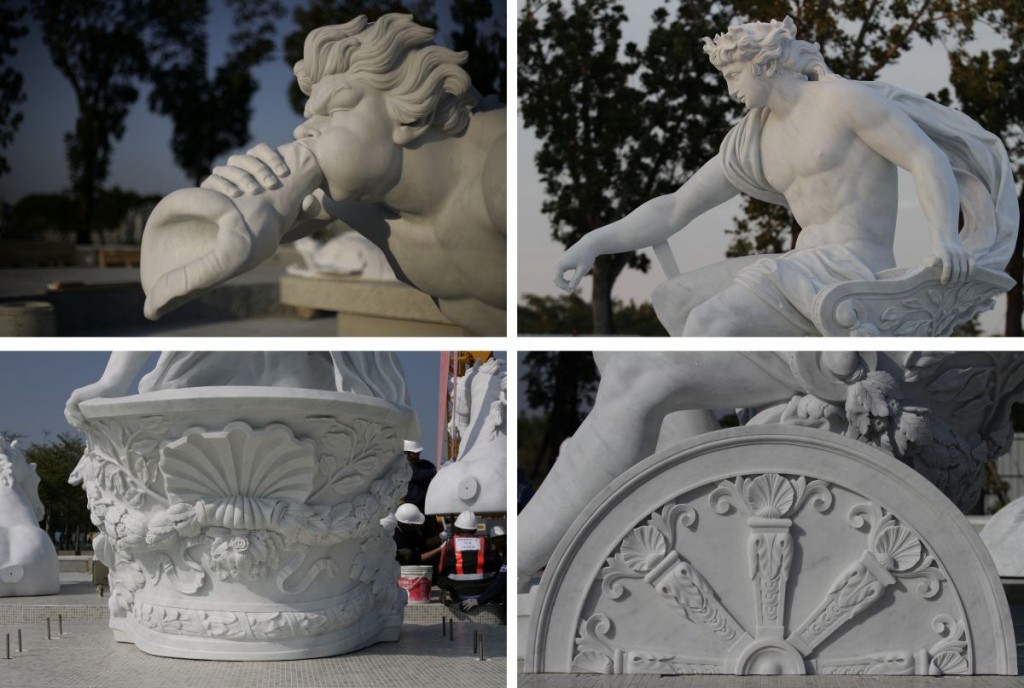
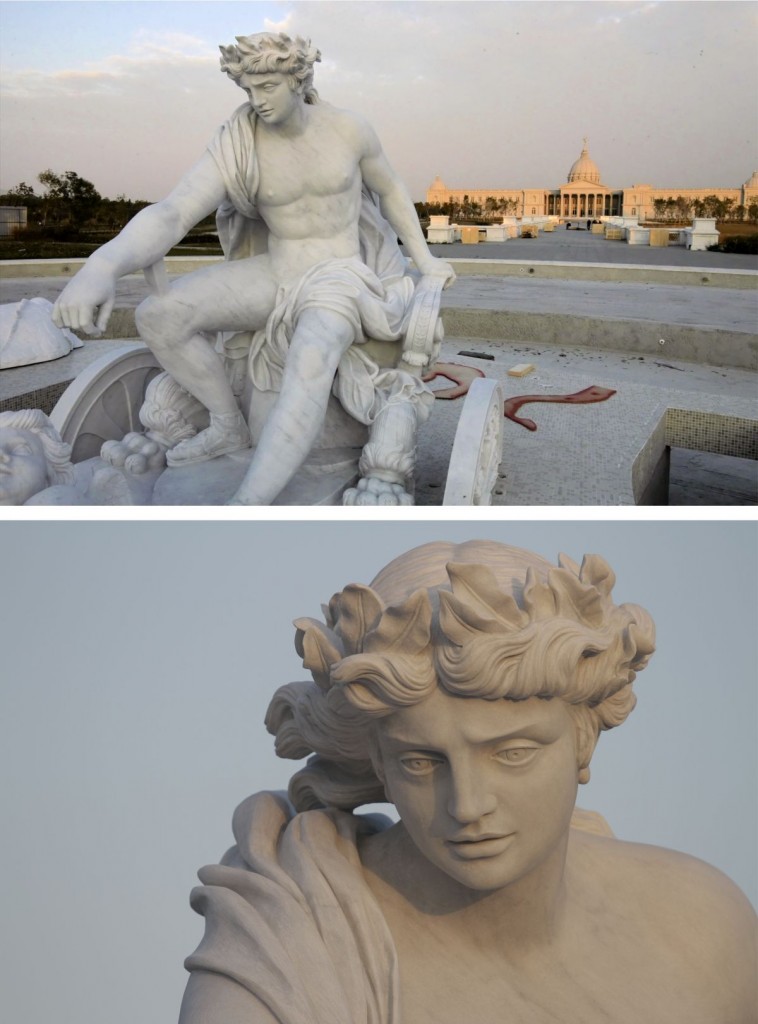
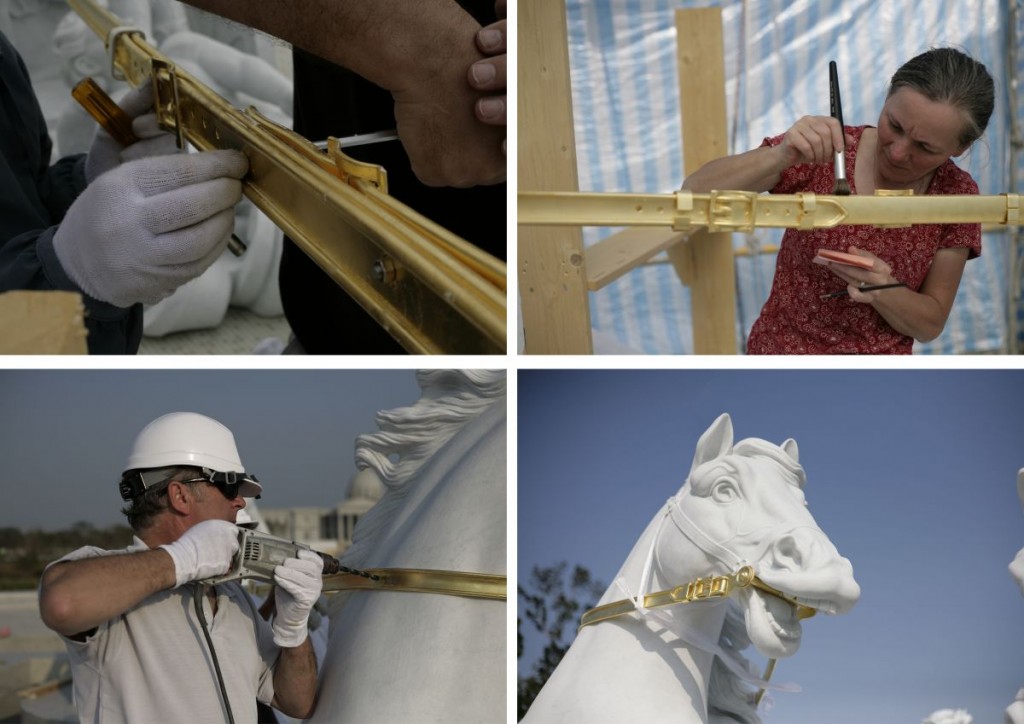
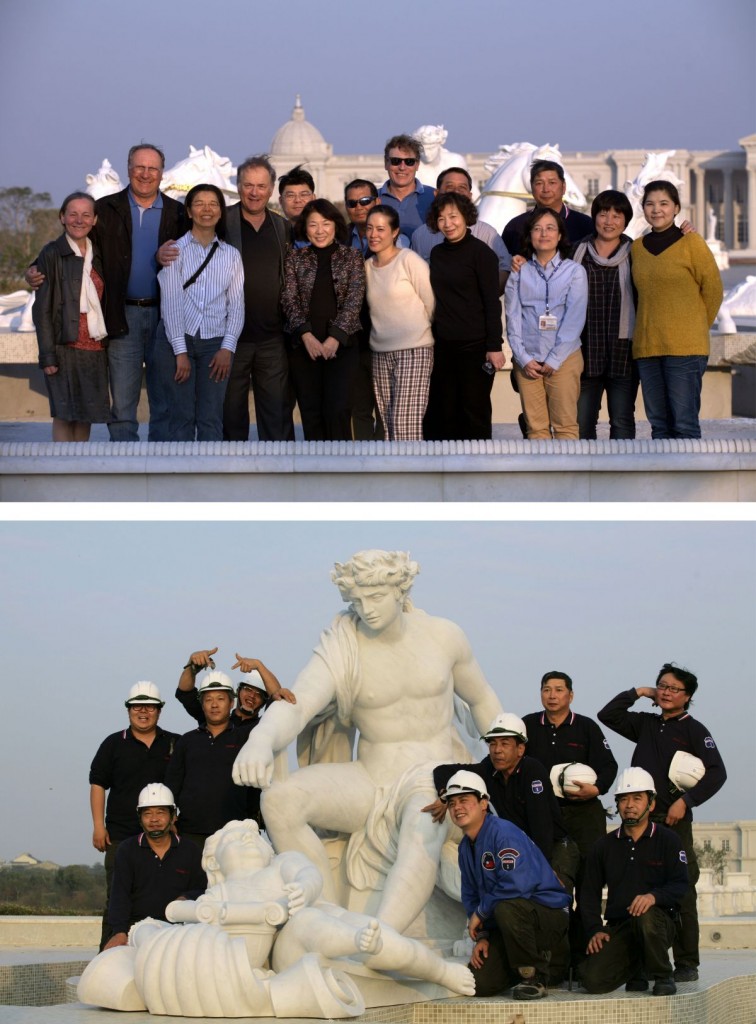
Having walked past this tribute to French creative skills, the five thousand visitors per day will cross a Roman-style marble bridge that is 190 m long and 15 m wide. The Greek Pantheon on pillars, comprising 22 sculptures in Carrare marble (also produced by the Franco Cervietti workshop), forms a guard of honour to access the beautiful Western works exhibited in the museum.
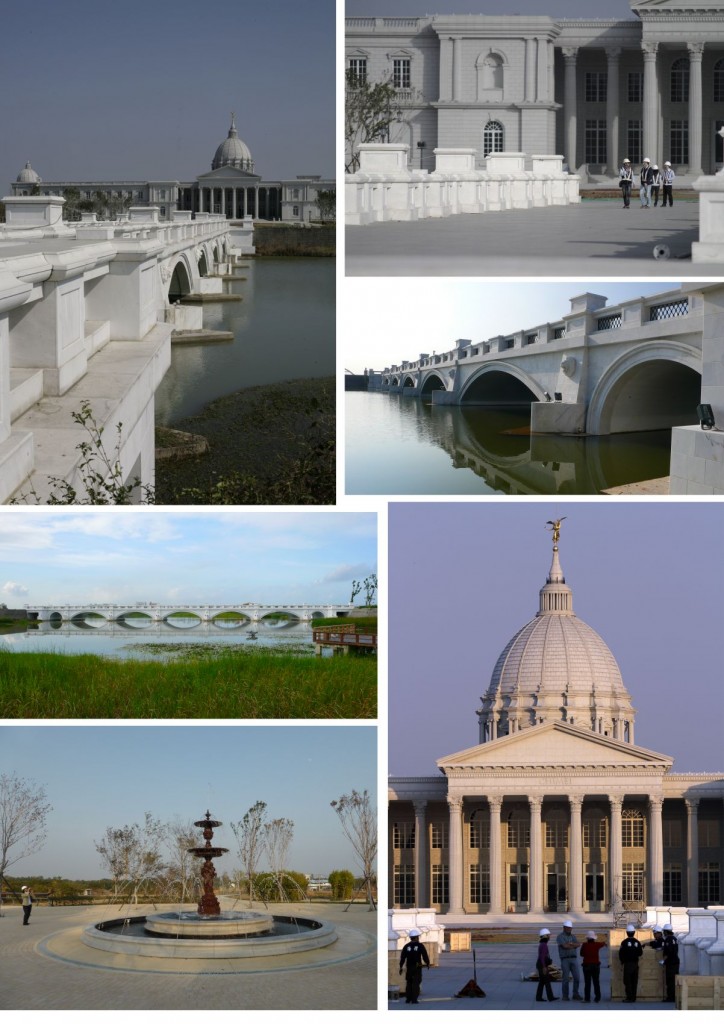
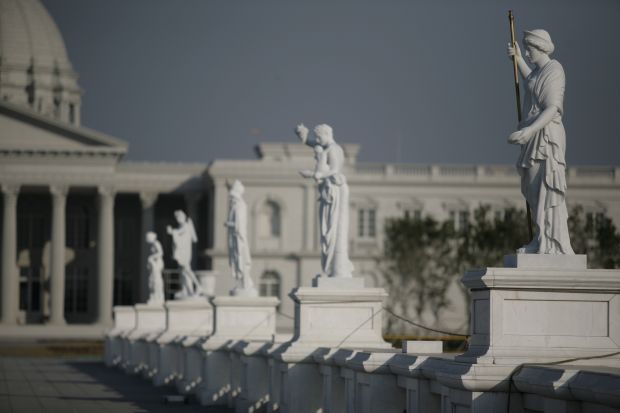
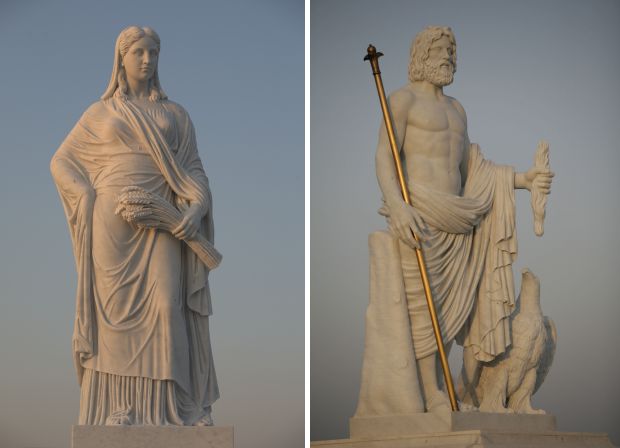
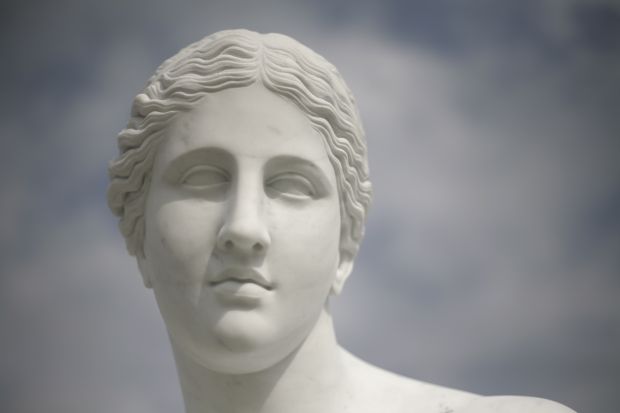
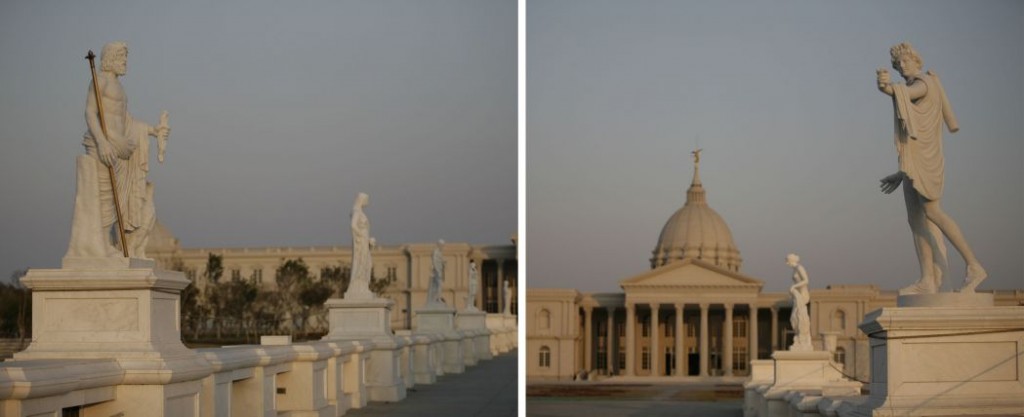
Notes
(1) This information is also available on the official website of the museum
and at the Chimei Museum Digital Violin Archive Project

(2) Sponsorship from the Chi Mei Foundation enabled a bronze to be offered to the City of Paris that is identical to the Theseus fighting the Centaure Bienor sculpture for the Barye monument on the Île Saint-Louis (an article on which by Didier Rykner is published in Tribune de l’art).
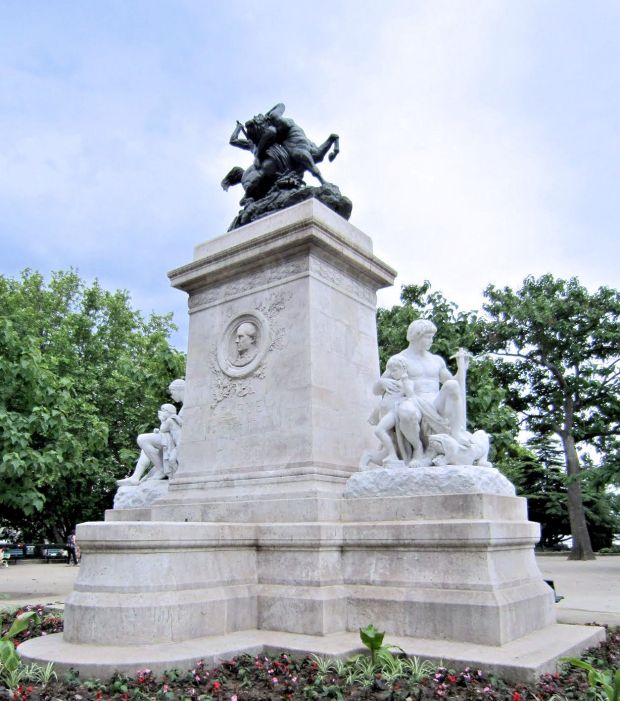 I will have the opportunity to discuss this subject in the near future, as the Lion and Serpent will also return to the foot of this monument in Paris on 23 June 2014 thanks to sponsorship from the Chi Mei Foundation.
I will have the opportunity to discuss this subject in the near future, as the Lion and Serpent will also return to the foot of this monument in Paris on 23 June 2014 thanks to sponsorship from the Chi Mei Foundation.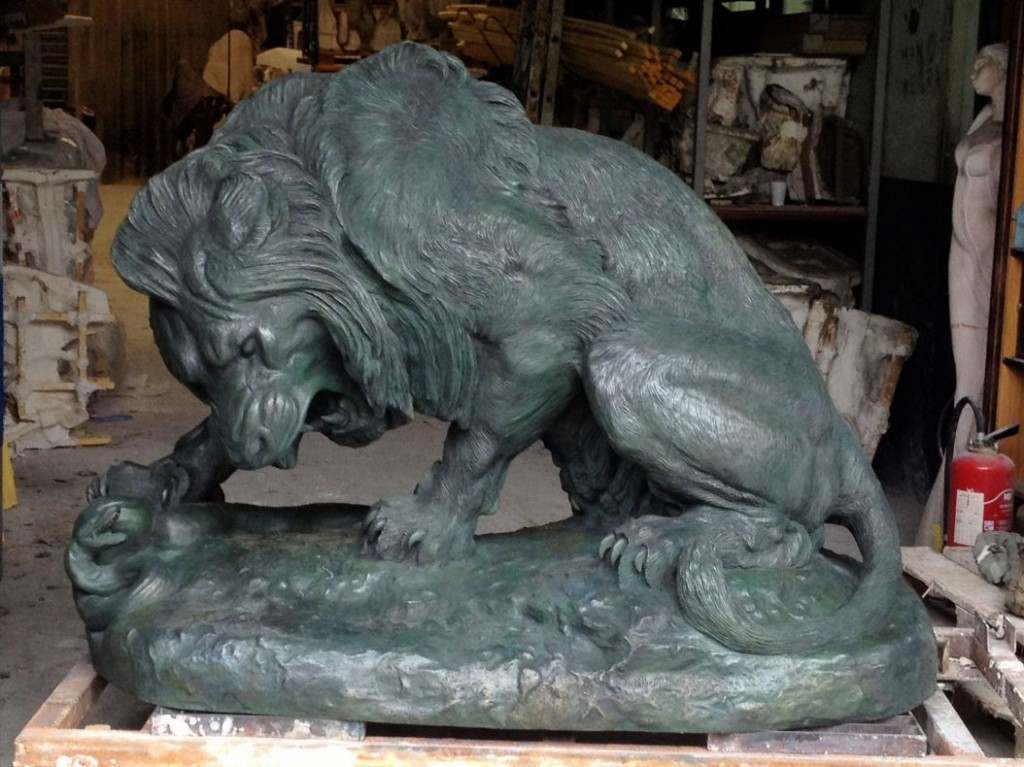
(3) This is my second copy of a work from the Palace of Versailles – in 1981, I made a game table in sculpted and gilded oak that matches the 17th-century model in the Hall of Mirrors.
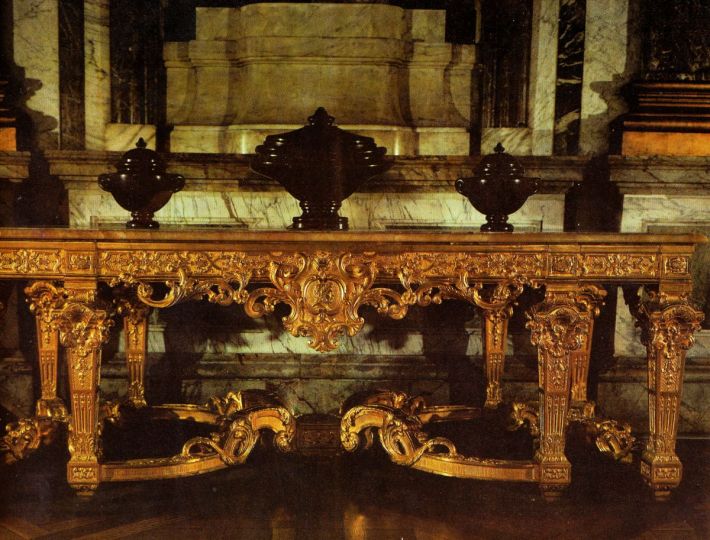
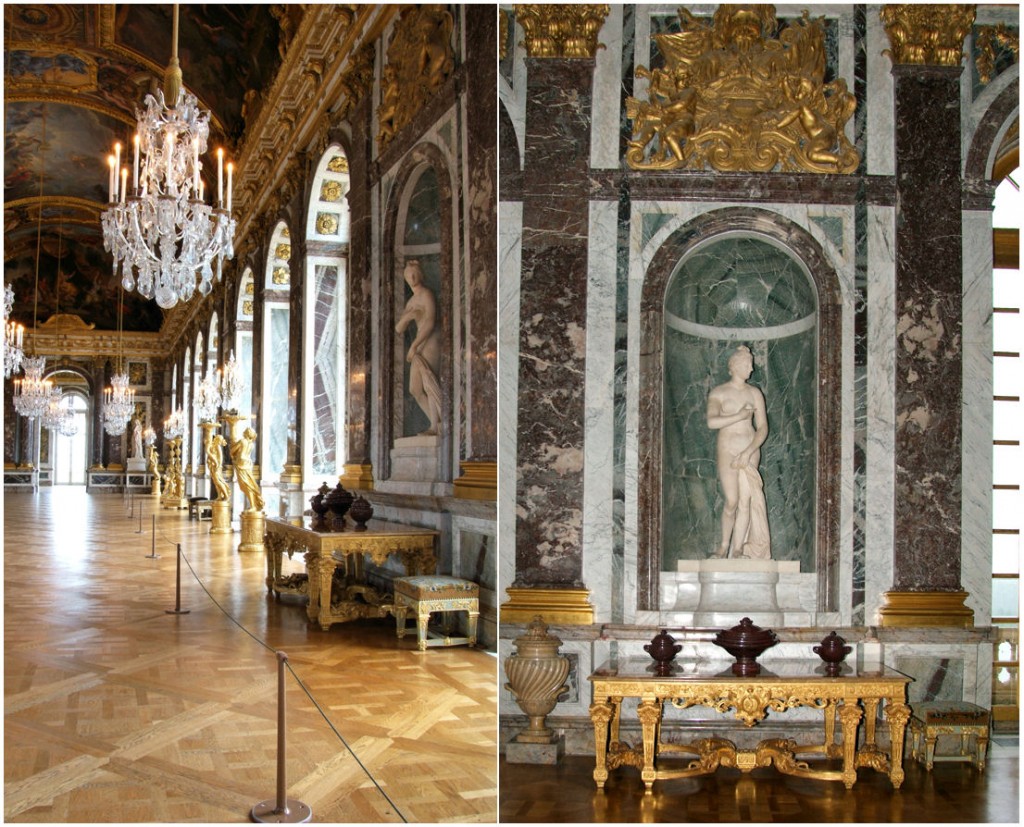
(4) To discover other productions by the Franco Cervietti workshop in Pietrasanta: www.cervietti.com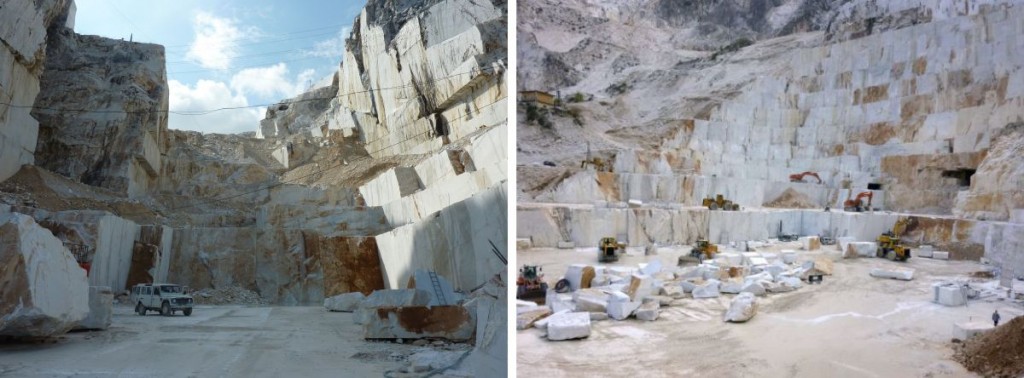
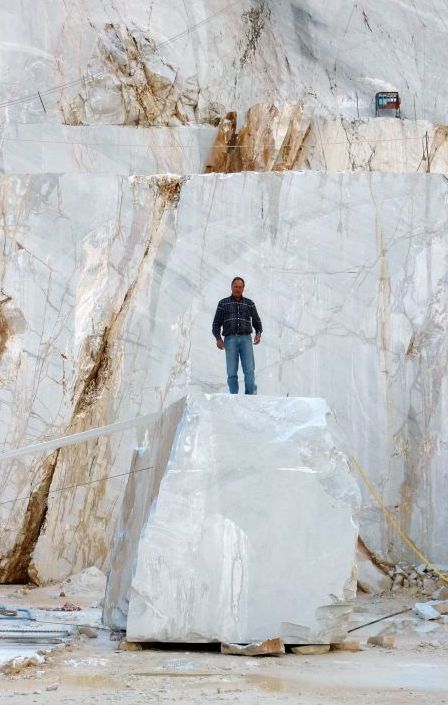 Franco Cervietti, in the quarry in Carrare, on the 56-tonne block of marble used to create the Apollo sculpture.
Franco Cervietti, in the quarry in Carrare, on the 56-tonne block of marble used to create the Apollo sculpture.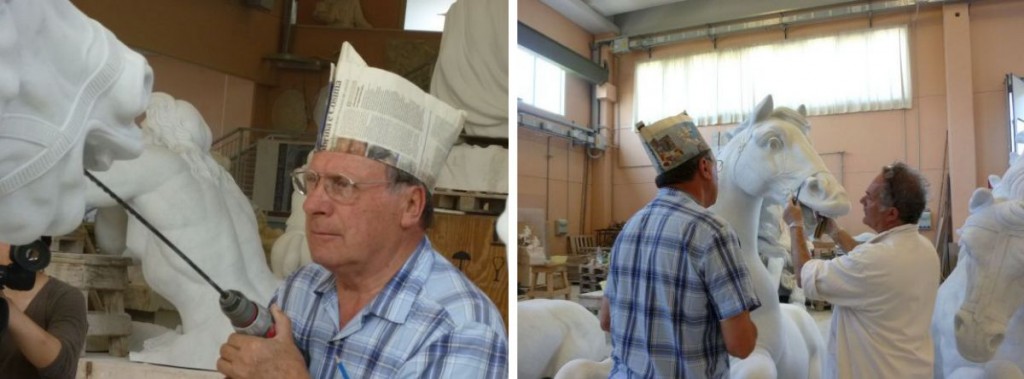 Franco Cervietti and Gilles Perrault in Pietrasanta, Tuscany, attaching the various pieces of the sculpture.
Franco Cervietti and Gilles Perrault in Pietrasanta, Tuscany, attaching the various pieces of the sculpture.
Photographies Droits Réservés © Chi Mei Foundation © Gilles Perrault
